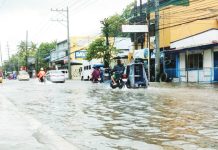
WESTERN Visayas has every reason to celebrate. With a fish sufficiency level of 117% and a 14.1% increase in fisheries production in the first quarter of 2025 — rising from 52,415 metric tons to 59,786 metric tons as reported by this paper yesterday — our region’s fisheries sector is productive. These figures reflect not only the richness of the Visayan Sea but also the importance of marine ecosystems in sustaining livelihoods and food security.
But behind the encouraging statistics is a fragile truth: this bounty is not guaranteed to last. The Bureau of Fisheries and Aquatic Resources (BFAR) has issued a sobering warning. Unless we take concrete steps to protect our coral reefs, mangroves, and seagrass beds, the very ecosystems that sustain fish production could collapse — along with our gains. As BFAR Region 6 director Remia Aparri rightly pointed out, “If these areas disappear, we will lose fish.”
It is a paradox that demands attention: we are at our most abundant, yet we are also at our most vulnerable.
Illegal fishing, destructive practices, and poor governance are not abstract threats — they are real, present dangers that continue to chip away at our natural marine capital. These habitats are the breeding and nursery grounds for the fish we consume. When they are damaged or destroyed, our fish stocks dwindle, and no amount of fishing effort can replenish them.
The recent lifting of the closed season in the Visayan Sea — an effective measure that restricts the catch of sardines, herring, and mackerel during their peak reproductive period — is a science-backed approach to sustainability. BFAR’s own data showed an increase in herring production in 2020 as a direct result of the policy. Yet, as Director Aparri emphasized, this strategy is not enough on its own. We must strengthen marine protected areas, improve enforcement at the local level, and build a culture of environmental stewardship among fishers, LGUs, and consumers alike.
It is heartening to see Antique Province lead in aquaculture production with 22,778 metric tons, followed by Capiz, Iloilo, Aklan, and Guimaras. These numbers represent both economic vitality and the fruits of nature’s generosity. But we must not make the fatal mistake of assuming this abundance is infinite.
We cannot afford to let short-term gain blind us to long-term loss. Environmental degradation does not happen overnight — but its consequences, once felt, are often irreversible. This is the time for decisive action. Ocean protection must be treated not as a peripheral issue, but as a central pillar of regional development and food security.
Western Visayas has the advantage of learning from success while there is still success to learn from. The choice before us: either we invest now in protecting our marine ecosystems, or we gamble away the very source of our prosperity.
The bounty is ours — but only if we protect the waters that give it.







